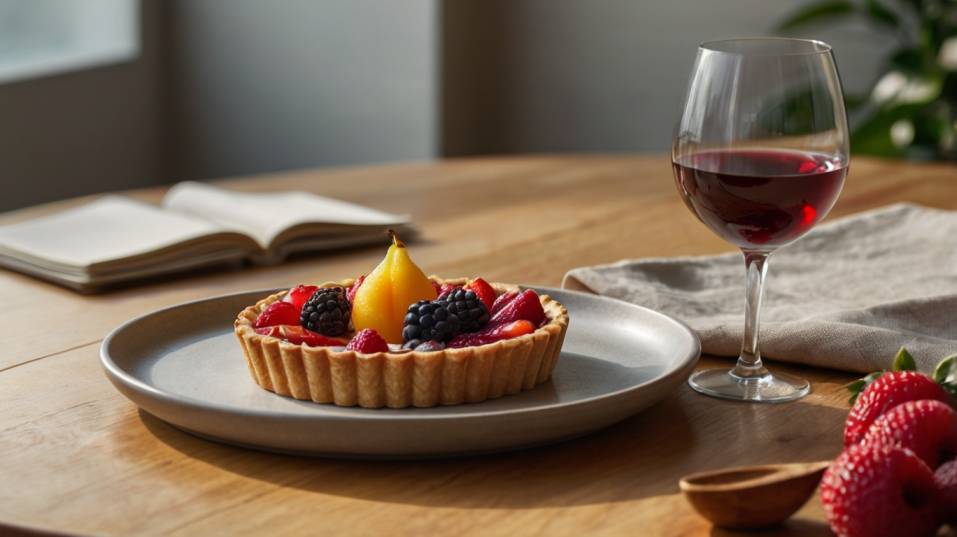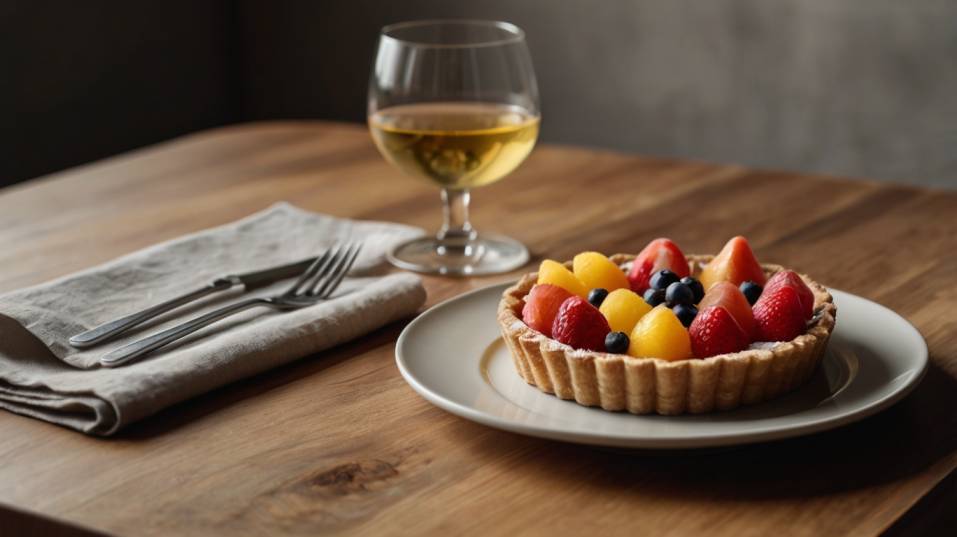Wine and Dessert: What Actually Works
Discover how to pair wine and dessert with confidence. Learn the rules of sweetness, texture, and contrast—without the guesswork or jargon.

Ever get to dessert and wonder if your wine should sit this one out? You’re not alone. Most pairings fall flat because sugar rewrites the rules.
But with the right match, wine and dessert can elevate each other into something unforgettable. This guide breaks down what actually works—without jargon, guesswork, or flavor wheels.
You’ll learn to spot balance, match texture, and use contrast to your advantage. Dessert isn’t the end. It’s the next great chapter in your wine journey.
Why Most People Get Dessert Pairings Wrong
Most wine pairings center around savory food. Acid cuts fat. Tannin tames protein. Sweetness balances spice. Those ideas fall apart when you introduce sugar.
Dessert is structured differently. It’s already intense. It already dominates the palate. If you bring in a dry or overly structured wine, the pairing doesn’t just clash—it collapses. That Cabernet you loved with steak?
It’ll taste thin and sour next to a chocolate tart. That bone-dry sparkling? It might feel sharp and hollow with a slice of lemon cake.
The trick isn’t to avoid wine with dessert—it’s to understand how sweetness, body, and structure interact.
When you approach dessert with the same thoughtfulness as a main course, you start seeing wine less as a “drink” and more as a second ingredient on the plate.

Sweetness Rules the Pairing
Here’s the baseline: the wine needs to be as sweet or sweeter than the dessert. If it’s not, the sugar in the dish will make the wine taste harsh, metallic, or strangely acidic.
Even the fruitiest dry wines can’t compensate—they just don’t have enough residual sugar.
Start with wines that embrace sweetness naturally. Late-harvest whites, fortified reds, off-dry sparklings. They’re not “dessert wines” in name only—they’re structurally designed to hold their own against sugar and richness.
Classic pairings that just work:
- Late-Harvest Riesling with apple tart, lemon bars, or fruit galette. The acidity keeps the pairing clean; the sweetness lifts the fruit.
- Sauternes or Barsac with crème brûlée, poached pears, or shortbread. These Bordeaux stickies are luxurious without being cloying.
- Ruby or Vintage Port with flourless chocolate cake, brownies, or dense berry cobblers. High tannin, high alcohol, deep sweetness—it’s built for chocolate.
You don’t need to go high-end. Even a simple bottle of Moscato d’Asti or off-dry Gewürztraminer can be stunning with the right dessert. What matters most is structure and balance, not price or prestige.
Texture: The Overlooked Game-Changer
If sweetness sets the baseline, texture refines it. Think about how the dessert feels in your mouth. Dense and buttery? Light and airy?
Cold and creamy? Texture determines how the wine interacts with each bite—and how it finishes on your palate.
Match body with body.
A weighty, velvety wine pairs better with a rich, indulgent dessert than something light and fizzy. A delicate mousse or sponge cake will get lost under a thick, syrupy Sherry.
Examples that show how texture matters:
- Moscato d’Asti with panna cotta or citrus soufflé. Its fine bubbles and low alcohol lift the dish without dragging it down.
- Tawny Port with pecan pie, sticky toffee pudding, or anything caramelized. The aged nutty notes echo the toasted sugar.
- Vin Santo with biscotti. In Italy, they literally dunk one into the other—because both have texture that stands up and flavor that unfolds slowly.
This isn’t about perfection. It’s about giving the wine and dessert a chance to meet on equal terms—so neither one dominates or disappears.
Contrast Keeps It Interesting
If your pairing feels too safe, contrast can wake it up. A rich dessert with a bright, acidic wine. A cold sorbet with a warm, honeyed pour. A sharp, salty cheese course (yes, it counts as dessert) with a deep, amber-toned Sherry.
Smart contrast keeps your palate alert. It prevents sugar overload. And it makes the last course of the meal feel like a new chapter, not a heavy finale.
Standout contrasting pairings:
- Tokaji Aszú with walnut cake or honeyed phyllo pastries. The acid cuts richness, the botrytis adds a savory edge.
- Pedro Ximénez Sherry with vanilla ice cream or espresso-laced tiramisu. The contrast of cold and syrupy heat is unforgettable.
- Demi-Sec Champagne with salted caramel tart. The bubbles cleanse, the salt sharpens the sweetness, and everything clicks into place.
Done right, contrast doesn’t feel like a stunt. It feels like balance through difference—and it’s often the most memorable route.
What About Chocolate?
Let’s talk about it directly: chocolate is one of the hardest things to pair with wine. The tannin, fat, and bitter compounds in cocoa collide with many dry reds, and most sweet wines can feel either too thin or too syrupy.
But chocolate can be amazing with the right wines—it just demands attention.
- Dark chocolate needs structure: Port, Banyuls, or Madeira all bring enough weight, acidity, and sugar to match without getting overwhelmed.
- Milk chocolate is more forgiving. Off-dry Lambrusco, Brachetto d’Acqui, or lightly sweet sparkling rosé can play beautifully with it.
- Chocolate with fruit? Match the fruit. A berry-laced chocolate torte does better with a wine that echoes that berry—like a Zinfandel or Syrah Port.
You don’t have to master chocolate pairings to enjoy them. Just remember: richness needs sweetness, bitterness needs complexity, and simplicity often works best.
How to Actually Start Tasting
The most effective way to learn wine and dessert pairing is hands-on. Taste, compare, and pay attention.
Choose two desserts with different textures. Try them with two different sweet wines. Ask simple questions:
- Which wine holds up best against the dessert?
- Which pairing brightens the finish, and which one feels heavy?
- Does the wine still taste good after a bite of the dish?
You’ll learn more from one side-by-side than from a dozen pairing charts. Over time, you’ll develop instinct—not just information.
Don’t aim for perfection. Aim for discovery.
Final Thoughts
Good wine and dessert pairings aren’t about rules. They’re about rhythm—matching sweetness, mirroring texture, and playing with contrast.
When you pay attention to how a wine feels, not just how it tastes, you start building fluency. You stop second-guessing and start selecting with confidence.
Tonight, skip the guesswork. Pick up a bottle of Moscato, Tokaji, or Port. Pair it with something you already love—a tart, a pie, even just good chocolate. Taste slowly. Pay attention. See what changes in the glass.
Every good pairing deepens your palate. Add that to your ritual—and make dessert worth lingering over.




